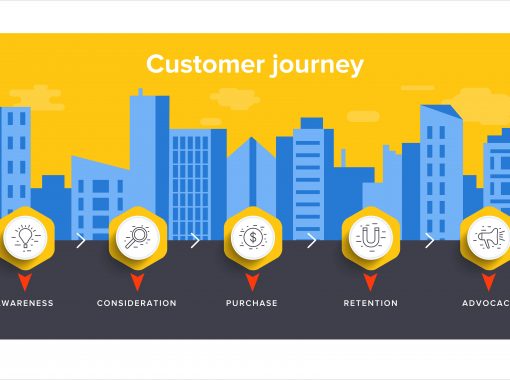
How SEO and SEM Work Together
As a digital marketer, you’re likely all too familiar with how crucial organic and paid marketing can be for your business. While each has its strengths, they’re most effective when combined into one powerful marketing strategy. To maximize results for your company, learn how SEO and SEM work together.
But why do they work best together, and how can you incorporate a combined SEM and SEO strategy today? We’ve got you covered with our actionable guide below.
First, a Recap…
Before we begin, let’s review the terms we’re using and why they’re essential to a digital marketing strategy.
Ahrefs defines search engine optimization (SEO) as the “process of improving a website’s visibility in search engines to get more traffic.” SEO is typically used when discussing types of organic (i.e., unpaid) marketing tactics that help improve a website’s rankings on search results, such as content marketing and website optimization.
SEMRush defines search engine marketing (SEM) as the “practice of promoting websites by increasing their visibility in search engine results pages (SERP) primarily through paid advertising…” It’s also sometimes called “pay-per-click” (PPC) advertising.
While some marketing teams may consider SEM to also include SEO, others prefer to keep them as separate parts of a marketing campaign. SEO focuses more on organic marketing, while SEM primarily involves paid advertising strategies.
How are SEO and SEM complementary? In a streamlined campaign, SEO and SEM work together to improve the other’s power, reducing both a team’s workload and the cost per click (CPC).
How SEO and SEM Work Together (and Why It Matters)
What are the benefits of combining SEO and SEM? Read on to understand how SEO and SEM work together, and the primary ways that harmonizing strategies can maximize results for your marketing team.
Improved Conversion Rates and Optimized Ad Spend
Researchers found that a marketing strategy that includes organic (SEO) and paid (SEM) strategies can result in 25% more clicks and a 27% increase in profits.
How? It comes from having a razor-sharp focus for your organic content and its goals. A well-thought-out SEO plan can work in tandem with SEM to lower your PPC ad spend by “priming the pump” for your most important keywords.
If you rank on the first page of Google for your target keyword in the organic search results and have sponsored ads showing up above those results, you double the chances of your brand driving traffic for that keyword.
You can use the data from your ad campaigns to optimize your landing pages for conversions to maximize the ROI of your SEM and SEO. And you can optimize your ad bidding strategies based on the high-value keywords you rank best for on the organic results.
Increased Visibility and Enhanced Targeting
Most marketing researchers believe it takes at least 7 to 8 exposures before the average consumer will notice an ad. Imagine cutting that in half by simply having a two-pronged marketing strategy that gets you seen by the right people more often.
The best SEM and SEO strategies work as a team to support the ultimate goal of getting your website to that #1 spot on the results page for your target keyword. SEO will support ad campaigns with organic, complementary keywords that give search engines more context about your business and the demographic you’re trying to target. SEM hits your avatar front and center on the search results with the only solution to their problem: yours.
For example, let’s say you’re planning to do an ad campaign promoting a new B2B payment service. Your SEM campaign might target one or two of your strongest keywords tied to how your solution has the lowest fees or shortest deposit wait times, or about the new AI insights you’ve incorporated.
Meanwhile, the SEO campaign would build on those keywords with content around keeping client payment information secure, the 5 problems businesses have collecting payments, tips for establishing net terms, etc.
Do you see how both SEM and SEO support one another in this combined campaign? They both target pain points, promote your new features, and give context for Google and Bing to understand what it is you’re promoting and to whom.
Best Practices for Getting Started With Combined SEO and SEM Strategies
Creating a successful campaign with parallel SEO and SEM strategies can feel overwhelming, but all it takes are a few intentional steps. First, don’t worry if you’ve been focusing on one over the other, as combining strategies shouldn’t be done from the get-go, especially if you’re on a limited budget.
Instead, give yourself a few months to build a solid SEO foundation that seeds your website into search engine results for the two to three keywords you want to target the most. Pay attention to user intent and location-specific (if relevant) data points to ensure you’re on the right track with your organic marketing. Then once you’re ready to merge methods, keep an eye on the following concepts, as their data points will tell you what’s working and what needs correcting.
Set Clear KPIs by Using SMART Goals
Before you begin a combined strategy, make sure you have clearly defined SMART (specific, measurable, achievable, relevant, and time-bound) goals and key performance indicators (KPIs). This will ensure you can accurately measure whether your SEO and SEM tactics are working in parallel or fighting against one another, potentially confusing search engines and prospective customers.
Regularly Monitor Performance, and Don’t Be Afraid to Make Adjustments
One of the most critical reasons for regularly monitoring your campaign is the ability to adapt your strategy. This ensures you won’t get caught by surprise at the end of your campaign. Check in with your ad manager and SEO specialist regularly to see how things are progressing. A good rule of thumb is to monitor performance weekly, especially during the beginning of a campaign.
If you’re not seeing the results you were hoping for, don’t be afraid to adjust your strategy in the middle of a campaign, but do be aware that it’s a balancing act. You don’t want to make so many changes that nothing has a chance to work, but you also don’t want to stick it out with a strategy that clearly isn’t working. Trust your judgment and make small tweaks accordingly.
Stay Up-To-Date With The Latest Search Engine Changes
Also, don’t ignore trends and search engine news. Being the first to adjust can set you miles ahead of your competitors. Google, Bing, and the other major search engines are constantly improving their algorithms to ensure they deliver the best results for their users, so check their official blogs often for news and best practices that will help you move up the rankings quickly.
The Bottom Line
Combining SEM and SEO strategies can increase the number of eyes on your content and boost results. To ensure your strategies are working, track and monitor your KPIs regularly, and never be afraid to pivot if things aren’t performing the way you anticipated. The key to how SEO and SEM work together most effectively is in regularly tweaking your strategy to maximize results.
Remember, though, that a solid SEO foundation built upon effective content is key to making this work. SEO brings leads into your sales funnel by positioning your company as the authority in your space. Need professional writers to power your SEO strategy? Contact us.
Megan is a 5x award-winning content creator who focuses mostly on the marketing, tech, and personal finance niches. As a writer, Megan knows these areas typically require a few touchpoints before conversion, so it’s her goal to create actionable content that keeps companies top-of-mind for their customers and easily moves them through the “know, like, trust” funnel.




